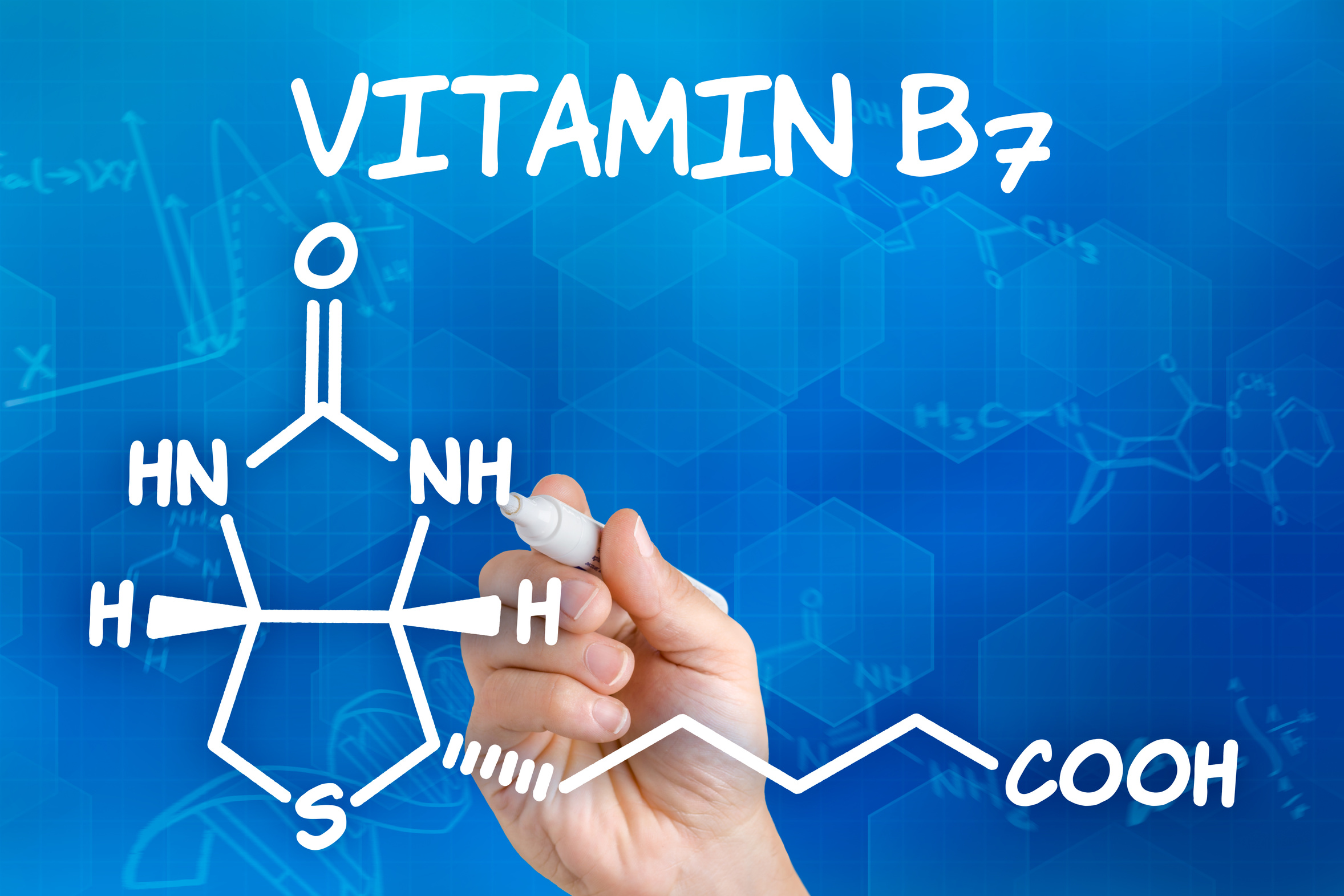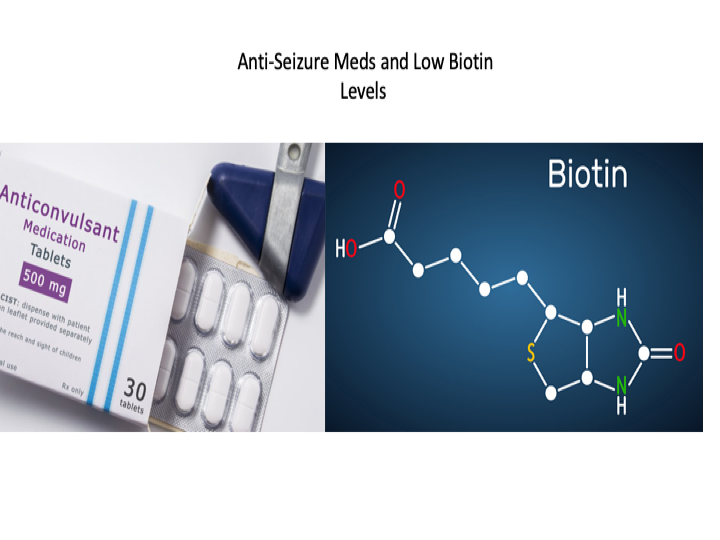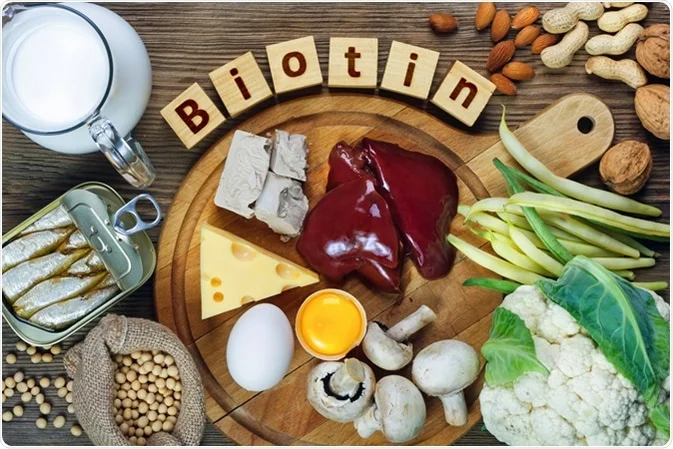
Biotin, also known as B7, is a water-soluble vitamin contributing biochemically as a coenzyme carrier responsible for nutrient metabolism and energy production (Gropper, Smith, & Carr, 2018). B7 also facilitates gene expression via biotinylation of histone proteins (such proteins “wrap” around DNA base pairs) whereby said micronutrient exposes or “unwraps” DNA to facilitate expression of genes (Gropper et al., 2018). Considering the physiological reach of B7, the following will consider causes, signs, and symptoms of B7 deficiency in addition to drugs that can deplete biotin levels. Finally, this author will consider sources of B7 in the diet to reach adequate intake

B7 deficiency, though rare, can express itself as paresthesia (burning or prickling sensation), lethargy, hypotonia (muscle weakness), hallucinations, and depression (Adhisivam, Mahto, & Mahadevan, 2007; Gropper at al., 2018). Furthermore, the skin can present as scaly, dry, and red especially around the mouth, nose, and eyes (Gropper et al., 2018). Finally, B7 deficiency may cause nausea, hair loss (alopecia), anorexia, muscle pain, brittle nails, and death (if left untreated) (Gropper et al., 2018). Having considered the signs and symptoms of B7 deficiency, the following will consider some of the primary causes of low blood levels of biotin.

B7 deficiency is most prevalent among individuals who consume raw eggs in excess (Adhisivam et al., 2007). Malabsorption is thought to occur since biotin is bound to a glycoprotein (carbohydrate bound to a polypeptide chain) called avidin in an irreversible non-covalent bond; once consumed, biotin cannot be digested (released from glycoprotein) and absorbed (Gropper et al., 2018). Genetic defects can also contribute to B7 malabsorption since said micronutrient requires biotinidase; an enzyme responsible for liberating biotin from biocytin (containing a ureido ring, thiophrene ring, and a valeric acid side chain) from an amino acid known as lysine within the intestinal brush border (Gropper et al., 2018). Having considered food and genetic influences upon compromised B7 absorption, the following will explore drugs that can induce similar deficiencies of biotin levels in the human body.

Individuals on long term anti-seizure medications may also experience B7 deficiencies; Higdon (2000) stated that individuals suffering from seizures often had inadequate levels in addition to increased urinary excretion of organic acids which indicates decreased carboxylase activity; such enzymes are synthesized for energy production (and metabolism of carbohydrates, fats, and proteins) and incorporate biotin within its structure (Higdon, 2000). Excessive excretion of associated organic acids is a means of determining lowered levels of biotin. Higdon (2000) submitted that anti-convulsants such as Dilantin, Mysoline, and Carbatrol may inhibit intestinal absorption, renal resorption, and increase biotin catabolism.

In conclusion, biotin is a micronutrient intimately involved in the synthesis of key enzymes critical to energy production and metabolism of carbohydrates, fats, and proteins. If deficiency does occur, there are signs and symptoms that can be tracked to serve as a first step in addressing sub-optimal levels of said micronutrient. One documented and diagnosed, B7 deficiency can be addressed by increasing foods rich in biotin such as milk, liver, eggs, and/or supplementation of B7 if necessary. Further care and possible supplementation of biotin should also be considered if individuals are on drugs (i.e., anticonvulsants)/have genetic aberrations that may inhibit B7 absorption. Ultimately, such steps should help liberate individuals from the physiological consequences of biotin deficiency.
References
Adhisivam, B, Mahto, D., & Mahadevan, S. (2007). Biotin responsive limb weakness. Indian Pediatrics, 44(3), 228-230.
Grooper, S. S., Smith, J. L., & Carr, T. P. (2018). Advanced nutrition and human metabolism (7thed.). Boston, MA: Cengage Learning.
Higdon, J. (2000). Biotin. Retrieved from https://lpi.oregonstate.edu/mic/vitamins/biotin#drug-interactions
-Michael McIsaac
